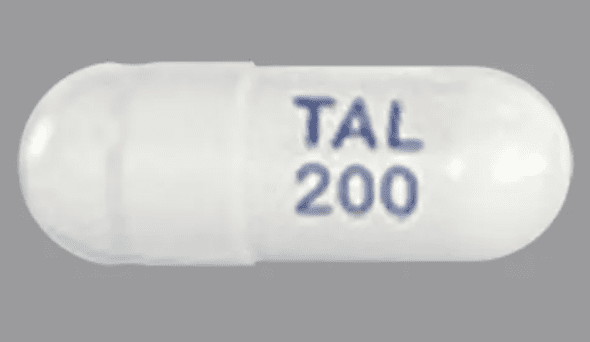Taletrectinib Disease Interactions
There are 5 disease interactions with taletrectinib.
Taletrectinib (applies to taletrectinib) arrhythmia
Moderate Potential Hazard, Moderate plausibility. Applicable conditions: Congestive Heart Failure, Long QT Syndrome, Arrhythmias
Taletrectinib can cause QTc interval prolongation, which can increase the risk for ventricular tachyarrhythmias (e.g., torsades de pointes) or sudden death. In patients with risk factors for QT prolongation such as long QT syndromes, clinically significant bradyarrhythmias, or severe/uncontrolled heart failure, the frequency of monitoring should be adjusted accordingly. Prior to therapy, monitor ECGs and electrolytes in all patients and then periodically as indicated.
Taletrectinib (applies to taletrectinib) fractures
Moderate Potential Hazard, Moderate plausibility. Applicable conditions: Osteoporosis, Pathological Fracture, Neoplasm of Bone
Taletrectinib can increase the risk of skeletal fractures. In clinical studies, some fractures occurred in the setting of predisposing factors such as osteoporosis, bone metastasis, and age-related degenerative conditions. There are no data on the effects of taletrectinib on healing of known fractures and risk of future fractures. Promptly evaluate patients with signs/symptoms of fractures (e.g., pain, changes in mobility, deformity).
Taletrectinib (applies to taletrectinib) ILD/pneumonitis
Moderate Potential Hazard, Moderate plausibility. Applicable conditions: Pulmonary Impairment, Interstitial Pneumonitis
Taletrectinib can cause severe, life-threatening, or fatal interstitial lung disease (ILD) or pneumonitis. Monitor patients for new or worsening pulmonary symptoms indicative of ILD/pneumonitis. Immediately withhold therapy in patients with suspected ILD/pneumonitis; dose reduction or permanent discontinuation of taletrectinib may be required based on severity.
Taletrectinib (applies to taletrectinib) liver dysfunction
Moderate Potential Hazard, Moderate plausibility. Applicable conditions: Liver Disease
The effect of moderate liver dysfunction (total bilirubin greater than 1.5 to 3 x ULN with any AST) or severe liver dysfunction (total bilirubin greater than 3 x ULN with any AST) on the pharmacokinetics (PK) of taletrectinib is unknown. No clinically significant PK differences were observed based on mild liver dysfunction. Taletrectinib can cause hepatotoxicity, including drug-induced liver injury. Monitor liver function tests including ALT, AST, and total bilirubin at baseline and as recommended by the manufacturer.
Taletrectinib (applies to taletrectinib) renal dysfunction
Moderate Potential Hazard, Moderate plausibility.
The effect of dialysis or severe renal dysfunction (estimated GFR less than 30 mL/min) on the pharmacokinetics of taletrectinib is unknown. No clinically significant pharmacokinetic differences were observed based on mild or moderate renal dysfunction.
Switch to professional interaction data
Taletrectinib drug interactions
There are 349 drug interactions with taletrectinib.
Taletrectinib alcohol/food interactions
There is 1 alcohol/food interaction with taletrectinib.
More about taletrectinib
- taletrectinib consumer information
- Check interactions
- Compare alternatives
- Side effects
- Dosage information
- During pregnancy
- Drug class: multikinase inhibitors
- En español
Related treatment guides
Drug Interaction Classification
| Highly clinically significant. Avoid combinations; the risk of the interaction outweighs the benefit. | |
| Moderately clinically significant. Usually avoid combinations; use it only under special circumstances. | |
| Minimally clinically significant. Minimize risk; assess risk and consider an alternative drug, take steps to circumvent the interaction risk and/or institute a monitoring plan. | |
| No interaction information available. |
See also:
Further information
Always consult your healthcare provider to ensure the information displayed on this page applies to your personal circumstances.


